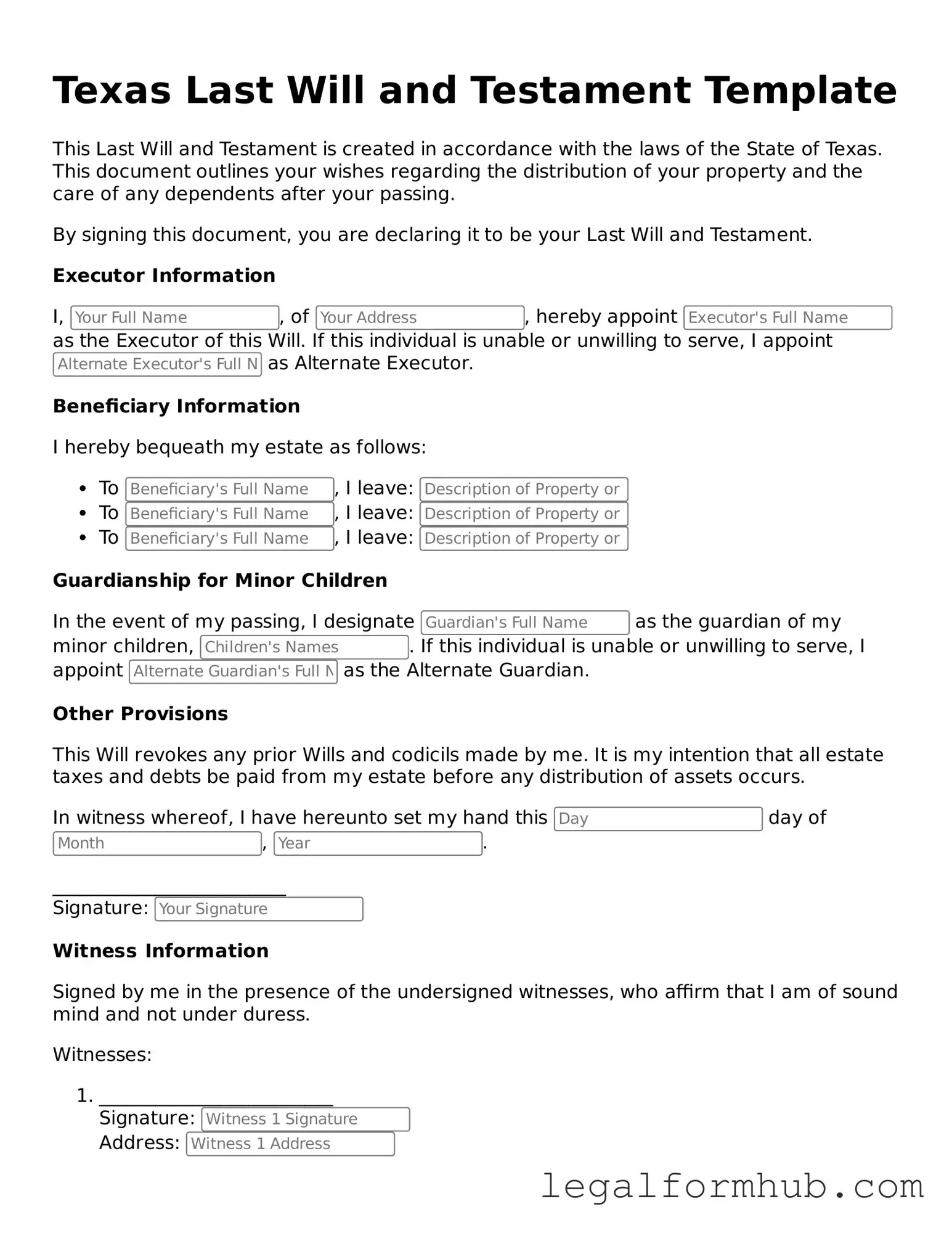The Texas Last Will and Testament is similar to a Living Will, which outlines an individual's wishes regarding medical treatment in case they become incapacitated. Both documents serve to express personal preferences, but while a Last Will deals with the distribution of assets after death, a Living Will focuses on healthcare decisions during life. This ensures that an individual's values and desires are respected even when they cannot communicate them directly.
Another document akin to the Last Will is the Durable Power of Attorney. This legal form grants someone the authority to make financial or legal decisions on behalf of another person if they are unable to do so. Like a Last Will, it is a critical tool for planning and managing one’s affairs, but it operates during the individual's lifetime rather than after death. Both documents require careful consideration of whom to trust with these responsibilities.
The Employment Verification form is an essential document for employers to confirm an employee's work history and eligibility for employment, ensuring that both parties are adequately protected. Understanding its significance not only aids in compliance but also streamlines operational procedures, complementing other legal documents. If you need to begin this process, you can easily get started by visiting Fill PDF Forms to fill out the necessary form.
The Revocable Trust shares similarities with the Last Will in that both are used for estate planning purposes. A Revocable Trust allows individuals to manage their assets during their lifetime and specify how those assets should be distributed upon their death. Unlike a Last Will, a Revocable Trust can help avoid probate, making the transfer of assets more efficient and private. Both documents reflect personal intentions regarding asset management and distribution.
A Codicil is a document that amends an existing Last Will and Testament. It allows individuals to make changes without creating an entirely new will. This is useful for updating beneficiaries or altering specific provisions. While both documents serve the purpose of conveying an individual’s last wishes, a Codicil must be executed with the same legal formalities as a Last Will to ensure its validity.
The Living Trust is another estate planning tool that functions similarly to a Last Will. It holds assets during a person's lifetime and specifies their distribution after death. Like a Last Will, it provides clear instructions on how to handle an estate. However, a Living Trust can help avoid the probate process, which can simplify and expedite the transfer of assets to beneficiaries.
A Healthcare Proxy is a document that designates someone to make medical decisions on behalf of an individual if they are unable to do so. While a Last Will addresses asset distribution, a Healthcare Proxy focuses on healthcare choices. Both documents empower individuals to ensure their wishes are honored, whether in financial matters or medical care.
The Declaration of Guardian for Minor Children is similar to a Last Will in that it allows parents to specify who they would like to care for their children in the event of their passing. This document serves to protect the interests of minor children, ensuring they are placed in a safe and loving environment. While a Last Will addresses asset distribution, this declaration focuses on guardianship, reflecting the parents’ wishes for their children's future.
The Prenuptial Agreement shares some characteristics with a Last Will, as both documents outline the distribution of assets. A Prenuptial Agreement is established before marriage and addresses how assets will be divided in the event of divorce or separation. While a Last Will comes into play after death, both documents require clear communication and agreement between parties to ensure their intentions are honored.
Finally, the Bill of Sale is similar in that it documents the transfer of ownership of personal property, much like how a Last Will details the distribution of assets. While the Last Will applies after death, a Bill of Sale is used during a person's lifetime to record transactions. Both documents serve to clarify ownership and ensure that the intentions of the parties involved are understood and legally recognized.
